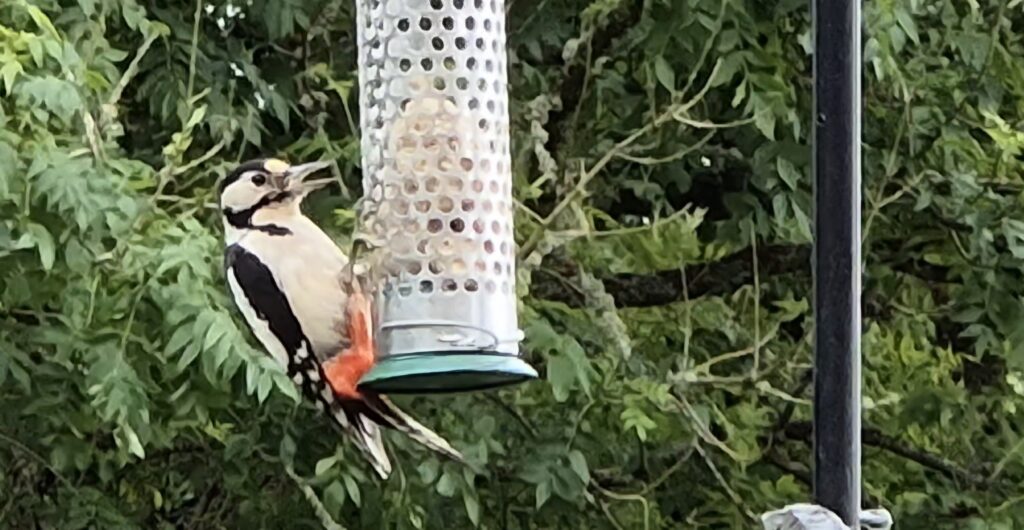Understanding Daily Woodpecker Visit Patterns in the UK
Woodpeckers Visit can vary but more often than not they tend to have a pattern.
If you have ever sat by the window, cup of tea in hand, waiting for your garden woodpecker to appear, you will know how unpredictable they can be. But over time, patterns do emerge and if you learn to read those rhythms, you will not only improve your chances of spotting them but also get a deeper sense of how woodpeckers organise their day.
From early drumming sessions to midday foraging flights, Great Spotted Woodpeckers are creatures of habit but only loosely. Their visits often line up with food availability, light levels, and temperature. Here is what I have learned after months of filming them, morning to evening, in my back garden.
Morning Activity
Early Morning: Prime Feeding Time
Early morning is the most active period for woodpeckers. Just after sunrise, between 6:30 and 8:30am during spring and summer, they tend to:
- Drum on trees or posts to declare territory
- Scout out feeders and food sources
- Do a first round of their local patch
Males often arrive first and stay longer. They are more confident and tend to claim the feeder early. If you are hoping to film or photograph a woodpecker, this is the best window. Make sure your camera is set up and ready before dawn. The combination of low golden light and bird activity is well worth the early start.
Late Morning to Midday
A Natural Slowdown
After the morning rush, activity dips. From mid-morning to lunchtime, many woodpeckers retreat into surrounding trees. During these quieter hours, you might still:
- Hear distant drumming or occasional kik calls
- See juveniles exploring alone in late summer
- Spot quiet foraging higher up in the canopy
This is a good time to let your static camera setups run. You will often catch subtle or spontaneous behaviours, especially from young birds that are still learning. Even when you do not see much, background footage can reveal interesting clues about movement and sound patterns when reviewed later.
Afternoon Movement
Season and Weather Dependent
Woodpecker activity in the afternoon varies greatly. In winter, there is often a burst of feeding between 2pm and 4pm as the birds prepare for the colder night ahead. In summer, it is less reliable but there are still bursts of movement. I have noticed:
- Longer pauses during hot bright afternoons
- Sudden activity spikes around 5:00 to 6:00pm
- Chicks being fed later in the day during nesting season
Think in terms of time blocks or windows rather than strict timings. Afternoon filming can be hit or miss but it is worth being ready for those last minute rushes when multiple birds show up in quick succession.
Evening Behaviour
Settling In for the Night
Evenings tend to be very quiet. By around 7:00pm in summer, most woodpeckers have already gone to roost. While you might catch the odd fly past or hear soft drumming, you are unlikely to see much feeding. At this time of day:
- Most birds have left the feeder
- Drumming slows or stops completely
- Roosting begins in tree cavities, usually alone
If you are still filming, this can be a nice opportunity to record ambient garden sounds or shift attention to other species that remain active into twilight. On rare occasions, you may hear a soft fading tap, a final sign off before the day ends.
Learning the Rhythm
Tuning Into Their World
Getting to know your local woodpeckers is about more than tracking their movements. It encourages a slower way of looking and listening. Over time, you will find yourself:
- Waking earlier and watching the light shift
- Noticing breeze direction and how birds move through it
- Listening to small sounds that signal a nearby visitor
With practice, you become part of the pattern too. What starts as a search for better footage turns into something more meaningful, a sense of timing and connection to the natural world just beyond the window. Watching woodpeckers is never predictable but it is always rewarding.
